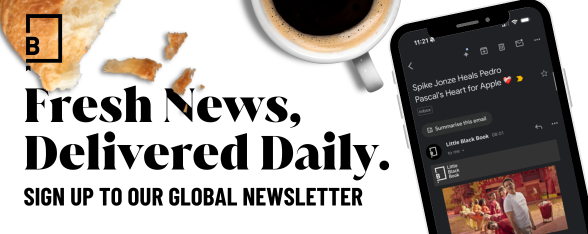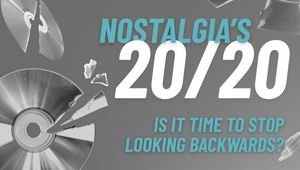
Meet the Agency that’s Leading Poland’s Awards Charge

At Little Black Book, we’re always on the hunt for agencies that are having a break out moment – but may have slipped past the rest of the world’s radar. For our money, there’s something interesting going on at Ogilvy Poland. Back in April, they took home Poland’s very first Yellow Pencil, and then in May they won Gold at the One Show. Basically, keep an eye out for this lot next week.
Their campaign To the Last Tree Standing harnessed gamers in order to raise awareness of and try to put an end to illegal logging in the country’s ancient Bialowieza Forest – by creating a scale replica of the forest in Minecraft. You can read more about the project here https://lbbonline.com/news/why-ogilvy-poland-created-a-11-scale-minecraft-map-of-the-bialowieza-forest/ - but the upshot is that as well as collecting some shiny awards, they also contributed towards saving the forest.
But we wanted to meet the team who worked on the project and proved our long-held suspicion that despite its current political situation, Poland (and indeed Central Europe) is a hotbed of creativity. LBB’s Laura Swinton spoke to ECD Tytus Klepacz , ECD Maciek Twardowski, copywriter Wojtek Kowalik, art director Daniel Marciniak - and Brazilian art director Mateus Cerqueira.
LBB> You’re part of the team that won Poland’s first yellow pencil! What was your reaction when you found out?
Mateus Cerqueira> We were so excited about it; we knew that we had won four pencils, and decided to fly to London for the ceremony. And when they announced the Yellow pencil we couldn’t believe it. This is the most important feedback from the industry and it means that we are doing something right.
LBB> Were you particularly into Minecraft before you started working on the project?
Daniel Marciniak> I knew Minecraft and its world, but I was not an active player. I’m a huge fan of this pixel, minimalist, simplified style. When you see less, you can imagine more.
LBB> What is your stand out memory of working on the Minecraft project?
Daniel Marciniak> When I saw the map of Puszcza Białowieska for the first time in the game. It was an amazing moment, because I thought it would be a ”normal game map”. It wasn’t. The forest was alive. And probably that was the reason why kids loved it.
LBB> And what was a key thing you learned during the process?
Daniel Marciniak > Actually, this is not a new thing, but: don’t listen to everybody. Just make your thing, if you know it’s good. Every time this sentence takes a new meaning.
LBB> What were the biggest challenges you had to overcome or figure out on the project?
Daniel Marciniak> Convincing people that this is extremely important not only because of political context, but also educational. Kids have to learn about the forest, they are going to take care of this planet in a few years and they usually don’t get involved in those kind of protests.
Maciej Twardowski> When we started, first I thought that the main challenge was going to be the money because of the scale of our project. But it wasn’t. People who were engaged on the client side, inside the agency and in our partner companies really wanted to do this huge project. Everyone started to think how to do more in the budget that we had. Because of the feeling that we are doing the right thing. Sometimes it was connected with working long hours or working over our limits. The biggest challenge was pushing the limits of ourselves day by day further and further....”
LBB> Why do you think the project has resonated so well with international juries?
Mateus Cerqueira> The most important thing of this campaign is that its educational, we are giving the opportunity to thousands of kids to learn about the nature and somehow fight to protect it. This is the truth anywhere in the world.
LBB> How would you describe the culture at Ogilvy Poland?
Maciej Twardowski> It is based mostly on something we call 'creative tension'. About 1.5 years ago, when we came here, our mission was to build the most creative creative department in Poland.
It seems that we didn’t fail. We hired a lot of talented and really experienced creatives not only from Poland. Some of them used to work in the past even as creative directors, some are young native digital ones, it’s a mixture of young and very experienced people which gives this specific tension. It’s an honour and fun to work with them every day. This creative tension is spread over other departments. When you do a project like this there is no place for silos any more. Everyone needs to perform at the highest level and that causes to be creative.”
LBB> And what’s the history of Ogilvy Poland?
Maciej Twardowski> Well, it’s one of the oldest agencies on our market. Last year we had the 25th birthday party of Ogilvy in Poland. We’ve even made a special logo for this occasion. It is a combination of the iconic visual of David’s face (Of course with a pipe) and the shape of our country. But going back to the history – Ogilvy used to be based here on doing really creative stuff. Campaigns that made the history of Polish local advertising were made in this place. Till this year Ogilvy Poland had two Cannes Lions. It seems that we are changing the history of awarded works from this agency right now. Ogilvy in Poland has always had a strong strategy and it’s one of the essentials for creatives to do good stuff.

LBB> What did you all do to celebrate the pencil?
Maciej Twardowski> We were waiting with the celebration for the results of The One Show Festival. Now when we already know that we have also The Best of Discipline award, two golds, one silver, one bronze and one merit there – we are definitely going to have a crazy celebration party for our agency.
LBB> Not only did you win amazing awards for the project, it also helped to save the forest – I’m curious, what was the reaction in the office when you hard that the logging was going to stop? And personally how did that make you feel?
Mateus Cerqueira> It was a well combined effort between Greenpeace activists, European Union and we opened a discussion with groups that were not talking or caring about it. Kids are the biggest influencers nowadays, they can make a live stream and reach millions of people. I think that made the difference. We were so proud and happy that it happened, sometimes we get ourselves thinking about recognition and awards, but what really matters is that this industry has the power to make real changes in the world and we should use it.
LBB> Winning the pencil certainly draws attention to the Polish ad industry generally – what are the key things people should know if they want to understand the Polish ad industry?
Maciej Twardowski> It’s a land full of a lot of local insights. Some of the most creative stuff from here is based on them - like our work. But because of the size of our country and its place of it in Europe some of our local problems have started to become global ones.
Polish advertising started long ago. Mostly as posters in the second part of 19th century. Artists like Wyspiański or Juliusz Kossak who used to be great painters started to develop awesome posters.
Then in the 20s and 30s of 20th century we had even advertising agencies here. In between two World Wars in such a short time Polish print communication grew in an incredible way. Polish posters always have been based on a strong concept and a beautiful form. Artists like Tadeusz Lucjan Gronowski were doing brilliant things. Communication in these times was focused mostly on tourism. Then after second World War advertising was almost lost. Of course there were acts of art. But advertising didn't exist. For almost 50 years because of the soviet regime.
After the Solidarity revolution and decommunization of Poland, the free market started to grow at the beginning of the ‘90s. Parallel to the growth of the market, advertising also started to rise. We are working now for local clients and global clients like you do in your country. Our language is one of the most complicated languages in this world, so of course we like to play with its double meaning and all the possibilities that it can give in communication. But year by year the number of ideas that are based on local insights but are built in an international universal way is growing.
To The Last Tree Standing shows this rule. People working in advertising here, creating something big that they believe together, unite totally and can do almost impossible things. It is one of our national features. The nation is really divided right now because of politics. But we can ‘do’ solidarity in the way that no other nation can. That's a contradiction but that's the way it is.
LBB> What do you think about the creative ambition in the Polish industry? Are things changing?
Daniel Marciniak> The creative ambition of Polish people has always been big. Check out, for example, Polish posters from 60-80’s. But our financial situation has always been different (which is the source of creativity in my opinion).
LBB> Is the industry one which is quite close knit and people from different agencies hang out or is it one where agencies kind of keep to themselves and don’t hang out with each other?
Daniel Marciniak> We all know each other, going for a beer, having fun. There is no problem with it.”
Maciej Twardowski> I always say that you can’t leave the office and just finish when you are working on ideas. Because the office is in your head. That’s also one of the reasons why we hang out together after work with people that we create with.
LBB> Tell us a bit about the creative scene in Poland outside of the agency – is it pretty vibrant? Who or what should we check out to get a flavour of it?
Daniel Marciniak> I think we have a bunch of creative people. We don’t want to mention anybody. But I will tell you- Polish graphic design is worth knowing about. Not only today, but in the past as well. Just check it.
Maciej Twardowski> The scene is pretty big. There are a lot of agencies. Global and local ones. There are talents, people working very hard to develop the great stuff. We have also our own local festival of creativity it is called KTR. But creativity in Poland is very strong also outside the agency as you said. For example polish animation used to be one of the best in the world. Also our cinematography. Start with Kieślowski and end with Pawlikowski who is doing a great job now.
The Museum of Solidarity in Gdansk is also one of the strongest creative ideas in our country. It’s interactive. It shows the way Poland got freedom.
There are hundreds of creative things I would recommend reading, knowing and visiting connected with our culture. But I want to say one last thing. Please remember and always share the message that the majority of Poles are thinking people. Our government is now doing strange things. We are really citizens of the world and I hope Poland will come back soon to its best. That’s why we are also doing projects like To The Last Tree Standing.















